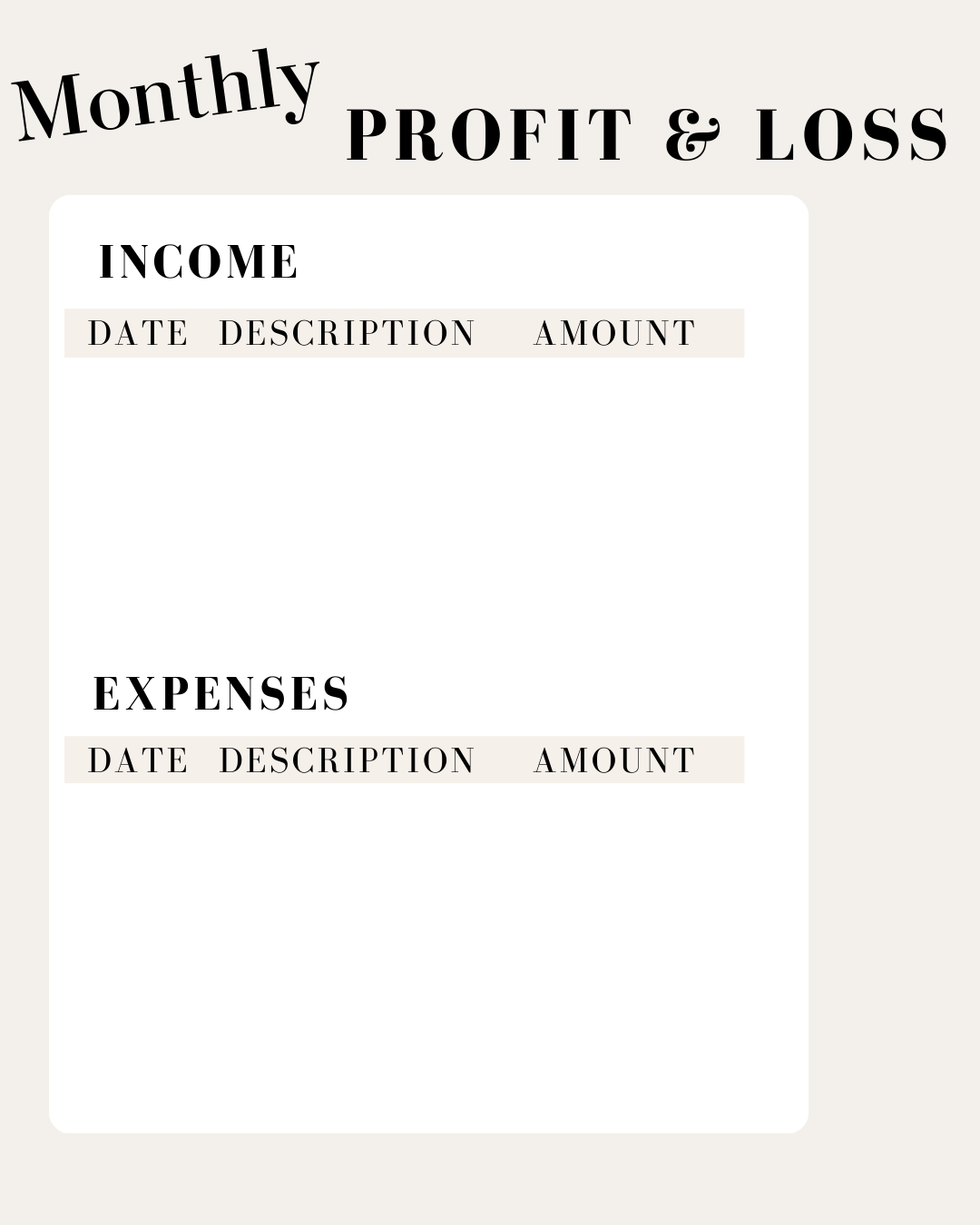#6 Profit and Loss Statement
Part 6 of 7
The P&L statement can also be used to file taxes and to make other financial planning decisions.
Using a profit and loss (P&L) statement to file taxes involves organizing and presenting your business income, expenses, and profit in a way that complies with tax regulations.
Here's a step-by-step guide to using a P&L statement for tax filing:
Understand Your P&L Statement: Familiarize yourself with the components of your P&L statement. It typically includes revenue, cost of goods sold (COGS), gross profit, operating expenses, net income, and other relevant financial metrics.
Accurate Record keeping: Ensure that your accounting records are accurate and up-to-date. Use a reliable accounting system or software to track income and expenses throughout the year. Categorize transactions correctly to align with tax codes.
Separate Personal and Business Finances: Maintain clear separation between your personal and business finances. Keep separate bank accounts and credit cards for your business transactions to simplify record keeping and avoid potential tax issues.
Identify Tax-Deductible Expenses: Review your P&L statement to identify tax-deductible business expenses. Common deductible expenses include rent, utilities, office supplies, travel expenses, marketing costs, and employee wages. Ensure that you have documentation (receipts, invoices) to support these deductions.
Add Back Non-Deductible Expenses: Identify any non-deductible expenses listed in your P&L statement and add them back to your taxable income. Personal expenses, fines, and penalties are examples of items that are generally not deductible.
Calculate Net Income: Determine your net income by subtracting total expenses from total revenue. This figure represents the taxable income that you'll report on your tax return.
Review Depreciation and Amortization: If applicable, review and include any depreciation and amortization expenses from your P&L statement. These are non-cash expenses that may affect your taxable income.
Consider Tax Credits: Investigate any available tax credits that your business may qualify for. Tax credits can directly reduce your tax liability. Common credits include research and development credits, energy credits, and small business health care credits.
Review Tax Forms: Understand the tax forms required for your business structure. For example, sole proprietors use Schedule C, while corporations use Form 1120. Partnerships and S corporations file informational returns (Form 1065 or Form 1120-S) and issue Schedule K-1 to individual partners or shareholders.
Fill Out Tax Forms: Transfer the relevant information from your P&L statement to the appropriate tax forms. Follow the instructions on the forms carefully, and provide accurate details about your income, deductions, and credits.
Submit the Tax Return: File your tax return by the designated deadline. For most businesses, this is typically by April 15th. If you need more time, consider filing for an extension, but ensure that you pay any taxes owed to avoid penalties.
Retain Records: Keep copies of your P&L statement, receipts, and other supporting documentation for a recommended period (usually at least three years) in case of an audit or future inquiries.
If you find tax preparation challenging, consider seeking the assistance of a professional accountant or tax advisor to ensure accuracy and compliance with tax regulations. They can provide guidance specific to your business structure and industry, helping you optimize deductions and minimize tax liabilities.

